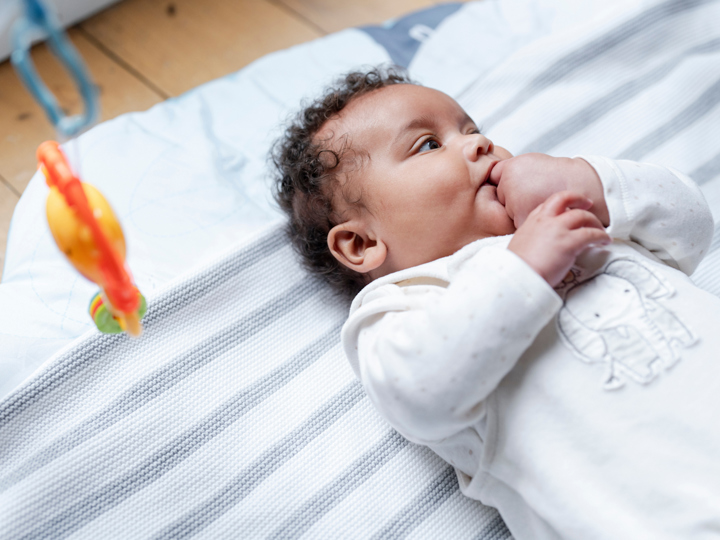How to tell if breastfeeding is going well
- 0-1 Years
- Feeding and eating

Breastfeeding should be a comfortable experience for you. The first days of your baby's life can be overwhelming for you and your baby. Some new parents can find it hard to know if breastfeeding is going well. But there are lots of signs that you can look out for to tell if breastfeeding is or is not going well.
Signs breastfeeding is going well
Breastfeeding is going well when your baby:
- feeds 8 or more times in 24 hours
- feeds for 5 to 40 minutes during each feed
- has a normal skin colour
- is generally calm and relaxed whilst feeding
- is content after most feeds
- has plenty of wet and dirty nappies
- at 3 to 4 days old and older, you can hear your baby swallowing frequently during the feed
Breastfeeding should be comfortable for you.
Speak to your midwife or health visitor if you:
- feel pain in your breast or nipples that doesn't stop after the first few sucks
- nipple comes out your baby's mouth looking pinched or flat on one side
- cannot tell if your baby is swallowing milk
- think your baby needs a dummy
- feel you need to give formula milk to your baby
Speak to your midwife or health visitor if your baby:
- is sleepy and had less than 6 feeds in 24 hours
- feeds for 5 minutes at each feed
- feeds for more than 40 minutes at each feed
- falls asleep on your breast or never finishes their feed
- has yellow skin and eyes (jaundice)
- refuses to breastfeed
- does not have wet and dirty nappies
Baby poo in the early days
What is inside your baby's nappy will change during their first week. These changes will help you know if feeding is going well.
In the first 2 days you will see a dark pink or red specks in your baby's nappy. These are called urates, also known as brick dust. These are completely normal to see in the first 2 days. Speak to your midwife if you see them after 2 days. After 2 days, urates can be a sign your baby is not getting enough milk.
Wet nappies are nappies your baby has peed in. With new disposable nappies, it can be hard to tell if they are wet. You can add 2 to 4 tablespoons of water to see if there is enough pee in the nappy.
Dirty nappies are nappies your baby has pooed in.
|
Baby's age |
Wet nappies (nappies with pee) | Dirty nappies (nappies with poo) |
|
1 to 2 days old |
1 or more urates may be seen per day. | 1 or more dark green or black tar-like poos. This is called meconium. |
|
3 to 4 days old |
3 or more wet nappies per day, the nappies will feel heavier. | 2 or more dirty nappies with a brown green yellow colour. The poo will be looser |
|
5 to 6 days old |
5 or more heavy wet nappies. | 2 or more dirty nappies with a yellow poo. This poo may be quite watery. |
|
7 to 28 days old |
6 or more heavy wet nappies. | 2 or more dirty nappies with a yellow watery poo that is seedy in appearance. This will be the size of a £2 coin or bigger. |
Downloads
Last reviewed: 14 May, 2025
